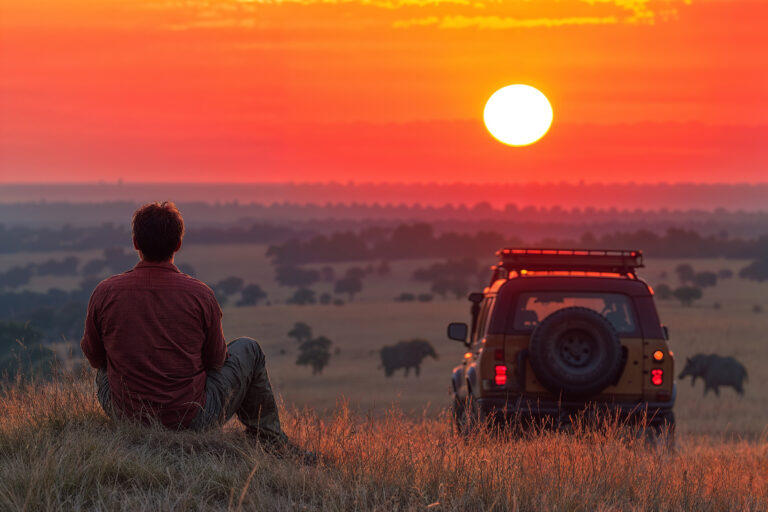Tanzania, a jewel of East Africa, is home to some of the world’s most iconic national parks and wildlife experiences. From the sweeping plains of the Serengeti to the lush depths of the Ngorongoro Crater, Tanzania offers unmatched safari adventures that draw travelers from across the globe. But to make the most of your journey, timing is everything. Knowing the best time to visit Tanzania for safari not only enhances your chances of unforgettable wildlife encounters but also ensures you travel in the most comfortable weather conditions.
Understanding Tanzania’s Safari Seasons
Tanzania experiences a tropical climate, generally divided into two main seasons: the dry season and the wet (or green) season. Each has its own advantages and challenges when it comes to planning a safari.
- Dry Season (June to October): This is widely regarded as the best time for safari in Tanzania. The weather is cooler and drier, making animals easier to spot as they gather around limited water sources. Vegetation is also less dense, improving visibility.
- Wet Season (November to May): The rains begin with short showers in November and December, followed by heavier rainfall from March to May. This period sees fewer tourists, greener landscapes, and lower accommodation rates. While it may be more challenging to spot certain wildlife, birdwatching is excellent during this season.
Highlights by Month
To help you decide the best time to visit, here’s a closer look at what each part of the year offers:
January to March
This period marks the calving season in the southern Serengeti. Thousands of wildebeest give birth, attracting predators like lions and cheetahs, creating dramatic wildlife scenes. The landscape is lush and green, and while there are occasional showers, the game viewing is still excellent.
April to May
This is the peak of the long rains. Many lodges close during this time due to muddy roads and less predictable weather. However, if you’re an adventurous traveler or a photographer looking for dramatic skies and vibrant green backdrops, this period may offer unique opportunities.
June to October
If you’re wondering the best time to visit Tanzania for safari, look no further than these dry months. June marks the start of the dry season, with cooler temperatures and thinning vegetation. From July to September, the Great Migration takes center stage as over a million wildebeest and zebra move northward through the Serengeti, often crossing into Kenya’s Maasai Mara. This is also the ideal time to visit the Ngorongoro Crater and Tarangire National Park, as animals congregate near waterholes.
November to December
This is the short rain season. Though rainfall is lighter and more sporadic, the parks begin to green again. Migratory birds return, making it a rewarding time for birdwatchers. There are fewer tourists compared to the peak dry season, allowing for a more intimate safari experience.
The Great Migration – A Safari Spectacle
One of the biggest draws for visiting Tanzania is the Great Migration, one of the most awe-inspiring wildlife events on Earth. This massive movement of over 1.5 million wildebeest, along with hundreds of thousands of zebras and gazelles, follows a circular route through the Serengeti ecosystem in search of fresh grazing.
- January – March: Calving season in the southern Serengeti.
- April – May: Movement toward central Serengeti.
- June – July: Migration through western Serengeti and Grumeti River crossings.
- August – September: Iconic Mara River crossings in northern Serengeti.
- October – December: Return toward southern Serengeti.
If witnessing this natural phenomenon is a priority, timing your safari around these migration phases is crucial.
Budget and Crowds
The dry season (especially July to September) is the most popular time, which means higher prices and more tourists. Luxury lodges can book out months in advance. If you’re looking for a more budget-friendly trip, the shoulder seasons (January–March and November) offer a balance of good game viewing and lower costs. The wet season, particularly April and May, offers the lowest rates, although accessibility can be an issue in some areas.
Safari Locations and Best Times to Visit
- Serengeti National Park: Year-round game viewing; peak migration sightings from June to October and calving season from January to March.
- Ngorongoro Crater: Excellent all year, but best in the dry season for easier access and clearer views.
- Tarangire National Park: Best from June to October when large herds gather.
- Lake Manyara: Great birdwatching year-round; tree-climbing lions best seen in the dry season.
- Ruaha and Selous (Nyerere National Park): Southern parks are ideal from June to October, offering remote, off-the-beaten-path safaris.
Final Thoughts
Ultimately, the best time to visit Tanzania for safari depends on what you hope to experience. Whether you’re drawn by the thunder of hooves during the Great Migration, the tranquil beauty of a green-season landscape, or the drama of predator-prey encounters, Tanzania offers something exceptional in every season.
If your priority is clear skies and abundant wildlife, aim for the dry months from June to October. For bird lovers, photographers, or budget-conscious travelers, the wet season can be equally rewarding—just with a bit more adventure. No matter when you go, a safari in Tanzania promises memories that will last a lifetime.


